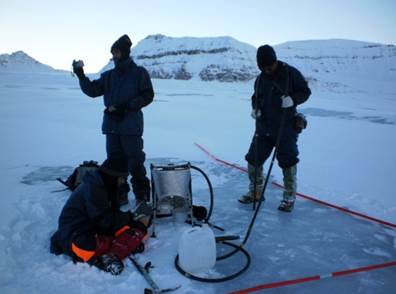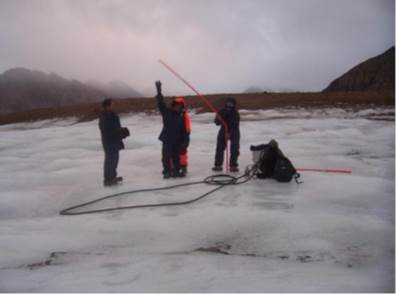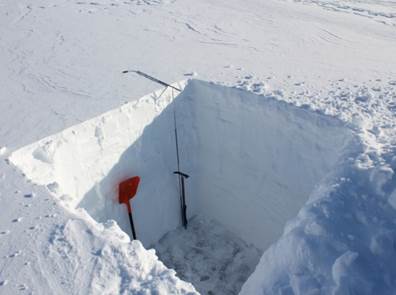- Screen Reader Access
- Skip to : main content / navigation
- Text Size
- Home
- Sitemap
- Contact us
- हिंदी
Rationale:
Svalbard archipelago in the high Arctic is home to several large bodies of mountain glaciers and tidewater glaciers. These glaciers have siginficant response to the ongoing atmsopheric processes and the climate changes in general. These glaciers also impact the local hydrological cycle and fjord ecosystems. Considering such importance of studying the glaciers in Svalbard, Indian researchers have initiated a project entitled “Integrated Monitoring of Vestre Broggerbreen Glacier, Svalbard, Arctic” since 2012. Initially, the objective of the project was to understand the dynamics and mass budget of Vestre Broggerbreen that is now extended to some other key glaciers that are not presently studied by other research teams.
Substantive chemical changes occur in the Arctic atmospheric boundary layer as a result of photochemical reactions in the atmosphere and heterogeneous reactions of gases with aerosols, snow in the atmosphere and snow on the ground. Recent experiments have demonstrated that surface snow in Polar Regions can act as a photochemical reactor influencing concentrations of a wide variety of important tropospheric trace gases like ozone and nitrogen containing compounds in the atmospheric boundary layer over snow-covered regions. Reactive halogens have important role in the troposphere processes and the sources of reactive halogens could be from sea-salt in surface snow, aerosols, frost flowers and photodegradable halogenated carbons of biological or anthropogenic origin. The chemical composition of snow and aerosols at the atmospheric boundary layer were thus studied in series of campaigns, with a focus on the quantification of the species being scavenged by aerosols, ionic species in surface snow (dry and wet deposition) as well as the factors that lead to the snow-air exchange.
Glaciological studies at Ny Alseund:
The Ny-Ålesund in Svalbard region is ideal for the glaciological studies due to the various ongoing atmospheric and cryospheric measurements in this region. Vestre Broggerbreen is a small valley-type glacier, close to the permanent settlement of Ny-Ålesund and is bounded by latitudes 78° 55' 14.5” N & 78°53' 26.9” and East Longitudes 11° 47' 23.3” 11° 38' 50.3”. The area of the glacier is approximately 4.7 km2. It is divided by a medial moraine into two separate smaller glaciers, termed VB-I (eastern flank) and VB-II (western flank). The VB-I glacier has a prominent ice-wall, separating its ablation zone from the accumulation zone. The VB-II glacier is curvi-linear with very high left lateral moraine. Direct glaciological method has been used to calculate annual net mass balance. Initially, a network of 23 stakes (which have been inserted 10-12m deep down in the ice surface) and 3-4 pits have been used to measure ablation and accumulation respectively. Later, stakes network have been increased to a total of 30 stakes. The number of snow pits was from 3-7. Ice density assumed 900kg/m3 however snow depth and density have been calculated by dug pits over glacier surface mostly in accumulation for summer balance and all over glacier for winter balance.



(Image: Installation of stakes and snow pit over Vestre Broggerbreen glacier, Courtesy: NCPOR).